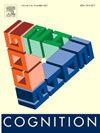例外情况在儿童和成人对一般陈述的判断中的作用。
IF 2.8
1区 心理学
Q1 PSYCHOLOGY, EXPERIMENTAL
引用次数: 0
摘要
一般陈述(如 "鸭子会下蛋")提供了关于种类的概括,即使面对例外情况,也可以判断为真实的。尽管过去的研究主要集中在证明通说正确的正面证据上,但很少有研究探讨与通说不符的证据(如鸭子不下蛋)的作用。目前的研究旨在了解不同类型的例外情况会如何不同程度地削弱通称。在研究 1 和研究 2 中,研究人员要求成人(n = 560)和 5-11 岁儿童(n = 141)判断关于虚构动物种类的一般性陈述(例如,乌龟有蓝色的角)的真实性。每个陈述都附有一组 6 个种类的成员,其中一些显示目标属性(如蓝色角),另一些显示替代属性(如红色角)或无属性(如无角)。研究 1 发现,当非匹配示例显示替代属性时,成人认可通用语句的可能性低于显示无属性时。研究 2 表明,当出现替代证据时,无论替代证据的显著性如何,儿童和成人都不太可能认可一般陈述。研究 3 通过一项更敏感的任务重复了这些发现,在这项任务中,成人(n = 120)和儿童(n = 97)被要求在有替代证据或无替代证据的集合中做出选择。这些研究首次证明,儿童和成人在对一般陈述进行判断时会注意非匹配证据,将替代证据解释为比缺失证据更有力的反证,并且不会使用替代属性的显著性来确定替代证据的强度。我们将讨论这项工作对语言和思维中存在问题的一般说法的影响。本文章由计算机程序翻译,如有差异,请以英文原文为准。
The role of exceptions in children's and adults' judgments about generic statements
Generic statements (e.g., “Ducks lay eggs”) provide generalizations about kinds that can be judged as true, even in the face of exceptions. Although past research has focused on the positive evidence that justifies a generic, little work has explored the role of evidence that does not match the generic claim (e.g., ducks that do not lay eggs). The current studies aim to understand how different types of exceptions may differentially undermine generic claims. In Studies 1 and 2, adults (n = 560) and children ages 5–11 (n = 141) were asked to judge the truth of generic statements about fictitious animal kinds (e.g., Wugs have blue horns). Accompanying each statement was a set of 6 kind members, some of which displayed the target property (e.g., blue horns), and others of which displayed either an alternative property (e.g., red horns), or an absence of the property (e.g., no horns). Study 1 found that adults were less likely to endorse generic statements when non-matching examples displayed an alternative property than when they displayed an absence of the property. Study 2 indicated that children as well as adults were less likely to endorse generic statements when presented with alternative evidence, regardless of the salience of the alternative. Study 3 replicated these findings with a more sensitive task in which adults (n = 120) and children (n = 97) were asked to choose between sets with either alternative or absence evidence. These studies provide the first evidence that children and adults attend to non-matching evidence when making judgments about generic statements, interpret alternative evidence to be stronger counterevidence than absence evidence, and do not use the salience of alternative properties to determine the strength of alternative evidence. We discuss the implications of this work for problematic generic claims in language and thought.
求助全文
通过发布文献求助,成功后即可免费获取论文全文。
去求助
来源期刊

Cognition
PSYCHOLOGY, EXPERIMENTAL-
CiteScore
6.40
自引率
5.90%
发文量
283
期刊介绍:
Cognition is an international journal that publishes theoretical and experimental papers on the study of the mind. It covers a wide variety of subjects concerning all the different aspects of cognition, ranging from biological and experimental studies to formal analysis. Contributions from the fields of psychology, neuroscience, linguistics, computer science, mathematics, ethology and philosophy are welcome in this journal provided that they have some bearing on the functioning of the mind. In addition, the journal serves as a forum for discussion of social and political aspects of cognitive science.
 求助内容:
求助内容: 应助结果提醒方式:
应助结果提醒方式:


